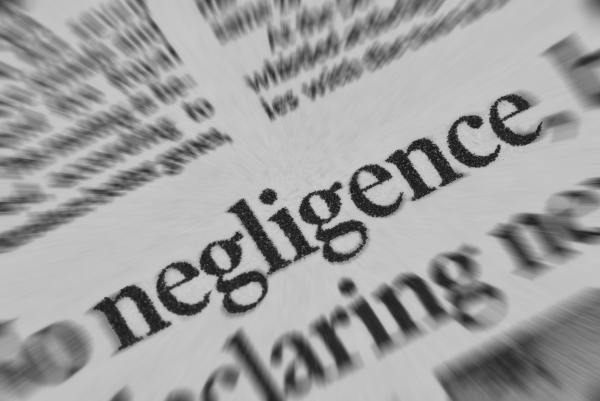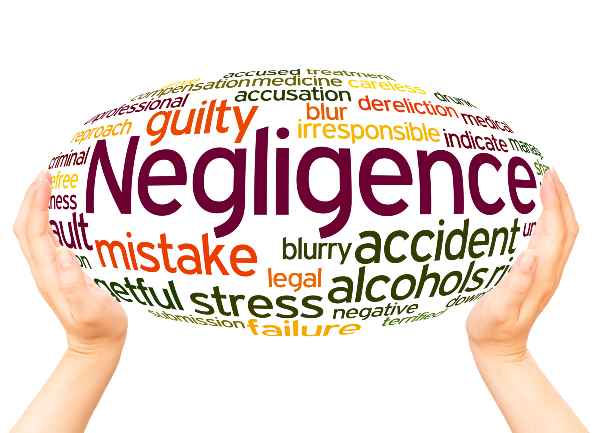Like other states in the U.S., Colorado has a set of laws governing car accidents and personal injury cases, where negligence falls under. How can a lawyer prove negligence in a car accident? The law allows a car accident victim to institute a lawsuit to get financial compensation for the loss suffered. To do this, you need the help of an accident lawyer, and at Firouzbakht Law Firm, we have experienced attorneys willing to help.. But before we get to that, let's look at the elements of negligence and how a lawyer can prove it in a car accident.

Negligence is a tort doctrine. It is a legal wrong suffered by someone at the hands of another person. Usually, the person at-fault fails to take due care regarding a foreseeable risk, affecting another person known as the victim.
There is a form of a contractual or fiduciary relationship between the at-fault party and the victim in many negligence cases. This is the kind of relationship you find between doctors and doctors and patients, employer and employee, banks and customers.
It also exists between drivers and their passengers. Thus, it follows that a motorist owes a duty of care to those traveling in their vehicles. This duty also extends to other drivers on the road, pedestrians, and owners of stationary properties. So, if a driver leaves an accident scene, they will be liable in an auto accident claim to the victim.
Failure to exercise due care amounts to a breach of duty, and the vehicle accident victims can seek compensation through a personal injury lawsuit. It is always prudent to hire a personal injury attorney in cases like this.
Generally, there are five negligence elements of negligence, but in car accident cases, the law focuses on four.. They include:
1. Duty of Care: For a personal injury lawyer to win a negligence lawsuit, they must show that the at-fault party owed you a duty of care. Without a duty, you cannot claim that the other person was responsible for your injuries or the property damage you suffered. Thus, in claims arising from drunk driving accidents, a dedicated car accident attorney can claim the driver owes other road users a duty not to drive without impairment.
2. Breach of Duty: This element means that the erring party failed to uphold the reasonable standard of care. What's reasonable is usually subjective, but it mostly includes:
In distracted driving accidents, it means the driver failed to pay attention to the road ahead, hence the crash.
3. Cause of Injury: The breach of duty must have led to the injury suffered by the victim for them to claim negligence.. If your vehicle accident lawyer can't link the loss you suffered to the negligent act of the fault driver, you will not be able to recover damages.. The attorney can call in expert witnesses or accident reconstruction specialists to link the crash to the injury.
4. Damages: If there is no wrong, there cannot be a remedy. The motor vehicle accident must have caused the victim to suffer loss, and you must prove it when claiming negligence. Most times, it is quantified into monetary terms. One way of proving damages is through the victim's medical records.
There are three types of damages awarded in negligence cases:
Economic damages have a definite dollar amount attached to them. Following motor vehicle accidents, the victim suffers monetary losses and physical injuries. The calculation of both amounts of economic damages. They include but are not limited to the following:
Note that you must submit your medical report and receipt of treatment to the court to calculate economic damages. Also, a victim who wants to make an insurance claim must submit the same to their insurance company.
Non-economic damages do not have a monetary value, meaning you can't calculate them to a definite dollar amount. They are subjective in nature and include the following:
Punitive damages only come into play if the court finds the fault driver guilty of gross negligence. It's the monetary compensation paid on top of economic and non-economic damages. The court awards it to compensate the plaintiff and serve as a deterrent to other drivers who might drive negligently. Often, defendants who are guilty of driving under the influence or distracted driving pay punitive damages.
Whether it is compensation for expenses or compensation for whiplash you are after, the negligent party pays. They do this in one of two ways;
One of the fundamental issues in an accident claim based on negligence is the defendant's duty to the victim. In several cases, the parties have no relationship. This is why in calculating negligence, the jury employs the "Reasonable Man" test. The test looks at what an average person would do in the same circumstances. For example, it is reasonable to stop at traffic lights or remain at an accident scene after a collision.
Here are two ways to calculate negligence in car accidents:

As mentioned above, most negligence cases revolve around what a reasonable person would do in the same situation. Whether they will act the same way or behave differently. In negligence per se, the emphasis is usually on the law the defendant violated. Once an experienced car accident attorney establishes that the erring party broke the law, the court sees it as an act of negligence.
In that instance, the victim has the right to recover. For a plaintiff to prove negligence per se in Colorado, they must show that:
A good example of negligence per se is a pedestrian injury. Suppose a driver violates the law to stop at crosswalks and give pedestrians the right of way. If an accident happens, the victim will have a valid claim against the negligent party.
Under this concept, the injured party will receive compensation for the breach of that law. However, we must point out that negligence per se does not apply in every instance where a driver breaks the law. They are predicated on safety statutes like traffic laws, DUI laws, and speed limits.
When apportioning faults to road users after a vehicle accident, Colorado uses the modified comparative fault rule. Ordinarily, this law states that an injured person can get compensated even if they are partially responsible for the accident. An at-fault driver can either be 50% negligent or share 51% negligence.
If the person has 50% or less liability, they can recover. But if they have 51% and above, they will not get any monetary damages. For example, if a distracted pedestrian gets hit by a drunk driver, the court may place 20% of the liability at the person's feet. It means that whatever accident settlement they are entitled to reduce by 20%.
Colorado imposes several damage caps to limit the amount a person can claim for personal injuries. The caps stem from the type of damage, the cause of the action, and the defendant's identity.
For instance, the damage caps for auto accidents' pain and suffering is $250,000 plus inflation. The only exception is if there's evidence that an increase is justified. In catastrophic accidents where the victim suffers a permanent physical disability, there's no damage cap. The best way to get above the compensation limit is by enlisting the help of an experienced lawyer.
Proving fault in a car accident lawsuit boils down to one question: who is the negligent driver? Sometimes, like in rear-end collisions, it is easy for personal injury lawyers to determine the at-fault party. Common sense dictates who the guilty party is, even without looking at the law.
Below, we listed ways a vehicle accident attorney can prove negligence in traffic accidents in Colorado.
This refers to a motor vehicle accident where it is easy to establish the negligent party. Nearly 100% of the time, a victim will not have a higher percentage of fault in this collision type.
One of such crashes is a rear-end collision. This type of accident happens when one driver hits another from behind.. Even if there are instances where the driver at the front might be wrong, the rear motorist will still be liable significantly. In such an instance, comparative negligence will come into play when making claims from accidents.
Another is a left-turn car accident. In these cases, the car making the left turn is deemed at fault in the case of collision. During the accident investigation, the police or insurance company looks at the point of the vehicle damage. The location is key in finding who will pay for the accident injuries and other future costs.
Whether it is a head-on collision, road rage, an accident caused by an intoxicated driver, a police report is vital.. If the driver's negligence is clear, the police will state it in their report. They will also state the legal duty the careless person breached that caused the accident. Personal injury lawyers use police reports in proving a negligence claim. A victim's insurance provider will also need it to ascertain their innocence.
Knowing the stipulations of Colorado traffic laws helps accident lawyers prove negligent actions and legal obligation. Since personal injury attorneys already understand the different provisions of the law, they will not only take the appropriate legal actions; they will tie your injury to the traffic accident.
A Statute of Limitations covers the time an injured party has to bring a lawsuit against the responsible party. In Colorado, a victim must bring a lawsuit for financial losses or otherwise within three years from when the traffic collision happened.
If the negligent act led to the victim's death, their estate could bring wrongful death action. They will get the compensatory damages the victim would have been entitled to have they lived. The Statute of Limitations for this action is two years. The time starts counting from when the victim's estate discovers that the negligent act caused the death.

As a prudent person, it's one thing to get into an accident from your mistake. It's something else for the accident to be a result of another person's carelessness. As negligence attorneys at Firouzbakht Law Firm, we understand that your insurance coverage may not be enough to get you the medical care you deserve.
Thus, it is vital to get an experienced attorney who will prove the at-fault party's negligence. Our team of expert lawyers will not only prove negligence, but they will also claim against the defendant's insurance policy and get you the maximum compensation. Contact us today for a no-obligation consultation and a free case review.